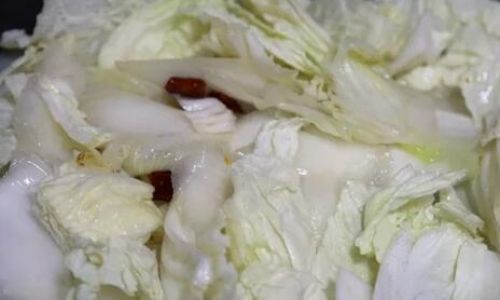Can Dried Persimmons Be Stored in a Refrigerator’s Fresh-Keeping Compartment? A Comprehensive Guide to Preserving This Sweet Delicacy**
Dried persimmons, known for their chewy texture and intense sweetness, are a beloved snack across cultures. Made by dehydrating fresh persimmons until they achieve a concentrated flavor and leathery consistency, these treats are prized for their long shelf life. However, questions about optimal storage—particularly whether refrigeration is advisable—often arise. This article explores the science and practicality of storing dried persimmons in a refrigerator’s fresh-keeping compartment, examining factors like humidity, temperature, packaging, and potential texture changes. By the end, readers will understand how to maximize the lifespan and quality of their dried persimmons while avoiding common pitfalls.
Understanding Dried Persimmons: Composition and Shelf Life
Before delving into storage methods, it’s essential to grasp why dried persimmons last longer than their fresh counterparts. The dehydration process removes moisture, inhibiting microbial growth and enzymatic reactions that cause spoilage. A properly dried persimmon contains less than 20% moisture, creating an environment where bacteria, yeasts, and molds struggle to thrive. This inherent dryness explains why dried persimmons can last months or even years without refrigeration—provided they are stored correctly.
However, shelf life is not indefinite. Over time, dried persimmons may absorb moisture from the air, leading to spoilage or texture degradation. Factors like humidity, light exposure, and temperature fluctuations accelerate this process. For instance, storing dried persimmons in a damp basement or near a sunny window will shorten their lifespan. This variability underscores the importance of controlled storage environments.

The Role of Refrigeration in Preserving Dried Persimmons
Refrigerators maintain temperatures between 34°F and 40°F (1°C to 4°C), which slows down chemical reactions and microbial activity. The fresh-keeping compartment, often the main section of a refrigerator, offers a stable, cool environment that could theoretically extend the shelf life of dried persimmons. But does this benefit outweigh potential drawbacks?
Advantages of Refrigeration
- Extended Shelf Life: By lowering temperatures, refrigeration reduces the rate of oxidation and enzymatic browning, which can cause flavor deterioration and color changes. Studies on dried fruits show that refrigeration can prolong shelf life by 30–50% compared to room-temperature storage.
- Pest Prevention: Refrigerators deter insects and rodents, which might otherwise infest pantry-stored dried persimmons.
- Humidity Control: Modern refrigerators often have adjustable humidity settings in crisper drawers, allowing users to minimize moisture exposure—a critical factor for preserving texture.
Disadvantages of Refrigeration
- Moisture Absorption: Refrigerator interiors are not entirely dry. Cold air can condense moisture, especially if dried persimmons are not adequately sealed. This moisture rehydration can lead to clumping, mold growth, or a gummy texture.
- Flavor Absorption: Dried persimmons are porous and may absorb odors from other foods in the refrigerator, such as onions, garlic, or strong cheeses.
- Texture Changes: Prolonged cold storage might alter the chewiness of dried persimmons, making them slightly harder or tougher due to moisture loss or starch retrogradation.
Optimal Refrigeration Practices for Dried Persimmons
To leverage the benefits of refrigeration while mitigating risks, follow these steps:
-
Preparation Before Storage

- Ensure Complete Dryness: Before refrigerating, confirm that the dried persimmons are uniformly dry. Any residual moisture increases spoilage risk.
- Remove Stems or Debris: Clean the fruit to prevent contamination.
-
Packaging Strategies
- Airtight Containers: Use glass jars with tight-fitting lids or resealable plastic bags to create a moisture barrier. Vacuum-sealed bags are ideal for long-term storage.
- Absorbent Materials: Place a paper towel or silica gel packet inside the container to absorb residual moisture.
- Layering: If storing large quantities, layer the persimmons with parchment paper to prevent clumping.
-
Placement in the Refrigerator
- Avoid the Door: The refrigerator door experiences temperature fluctuations each time it’s opened. Store dried persimmons in the main compartment or crisper drawer.
- Isolate Odors: Keep the container away from pungent foods to prevent flavor tainting.
-
Monitoring and Maintenance
- Regular Checks: Inspect the persimmons every 2–4 weeks for signs of spoilage (e.g., mold, off-odors, or unusual texture).
- Rotate Stock: Use the oldest batches first to ensure freshness.
Comparing Refrigeration to Other Storage Methods
While refrigeration offers a middle ground between room-temperature and frozen storage, it’s not the only option. Here’s how it stacks up against alternatives:
-
Room-Temperature Storage

- Pros: No energy costs, easy access, and no risk of texture changes from cold.
- Cons: Shorter shelf life (6–12 months for optimally dried persimmons), vulnerability to pests and humidity.
- Best For: Moderate climates with low humidity and cool temperatures (e.g., basements or pantries).
-
Freezing
- Pros: Extends shelf life to 18–24 months, preserves flavor and nutrients effectively.
- Cons: Requires thawing before consumption, potential texture changes (slightly drier after freezing), and space constraints.
- Best For: Long-term storage or bulk purchases.
-
Refrigeration
- Pros: Balances shelf life extension with convenience, protects against pests.
- Cons: Risk of moisture absorption, need for careful packaging.
- Best For: Frequent users who want to keep persimmons accessible without freezing.
Signs of Spoilage in Dried Persimmons
Even with proper storage, dried persimmons can eventually spoil. Watch for these indicators:
- Mold Growth: Fuzzy patches in green, white, or black hues signal contamination.
- Off-Odors: A fermented or sour smell indicates microbial activity.
- Unusual Texture: Excessive softness, stickiness, or crystallization (sugar bloom) may suggest moisture absorption or degradation.
- Discoloration: Dark spots or a dull appearance could result from oxidation or enzymatic reactions.
The Science Behind Dried Persimmons and Refrigeration
To appreciate why refrigeration works, it’s essential to understand the chemical and biological processes affecting dried fruits:
-
Water Activity (Aw): Dried persimmons have a low Aw (typically 0.6–0.7), making them inhospitable to most microorganisms. However, if Aw rises above 0.65 due to moisture absorption, spoilage organisms like Aspergillus molds can proliferate. Refrigeration slows this process but doesn’t halt it entirely.

-
Maillard Reaction: This browning reaction, responsible for the rich flavor of dried persimmons, occurs at a slower rate in cold temperatures. Refrigeration preserves the fruit’s golden hue and caramelized notes.
-
Enzyme Activity: Enzymes like polyphenol oxidase drive oxidation and flavor changes. Cold temperatures inhibit these enzymes, delaying rancidity and off-flavors.
-
Starch Retrogradation: Over time, starches in dried persimmons may recrystallize, causing texture hardening. Refrigeration accelerates this process slightly, though proper packaging minimizes the effect.
Cultural Practices and Regional Variations
Storage methods for dried persimmons vary globally, reflecting cultural preferences and climatic conditions:
- East Asia: In Japan, hoshigaki (hand-dried persimmons) are often stored in cool, dark rooms or hung in netting to allow airflow. Refrigeration is less common due to traditional practices and humid summers.
- Mediterranean Regions: In Turkey and Greece, dried persimmons are sometimes preserved in olive oil or honey, negating the need for refrigeration.
- Modern Urban Kitchens: With the rise of compact living, refrigerators are increasingly used for convenience, even if cultural norms previously favored pantry storage.
Troubleshooting Common Refrigeration Issues

- Clumping: If persimmons stick together, gently break them apart and ensure the container is airtight. Adding a desiccant packet can help.
- Freezer Burn (if accidentally frozen): While dried persimmons aren’t typically frozen, accidental freezing may cause dehydration. Discard affected pieces.
- Crystallization: Sugar bloom is harmless but unappealing. Store persimmons in a cool, dry place if this occurs.
Conclusion: Making an Informed Choice
Storing dried persimmons in a refrigerator’s fresh-keeping compartment is a viable strategy for extending shelf life, provided packaging minimizes moisture and odor exposure. While refrigeration isn’t without risks—such as texture changes or condensation—it offers a practical compromise between room-temperature convenience and frozen longevity.
Ultimately, the decision hinges on usage frequency, climate, and personal preference. For occasional snackers in humid regions, refrigeration provides peace of mind. For enthusiasts with ample pantry space, room-temperature storage may suffice. Regardless of the method, the key to preserving dried persimmons lies in diligence: monitoring for spoilage, using clean containers, and enjoying them before quality diminishes.
By understanding the interplay of temperature, humidity, and packaging, you can savor the sweet, chewy delight of dried persimmons for months to come—whether they reside in your refrigerator, pantry, or freezer.






0 comments